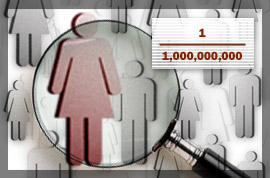Archival Notice
This is an archive page that is no longer being updated. It may contain outdated information and links may no longer function as originally intended.
Home | Glossary | Resources | Help | Contact Us | Course Map
The prosecutor should ask the DNA analyst to put the report statistics into real-world terms jurors will be able to relate to by making a statistical comparison to the world population as a whole (approximately 6 billion people). The prosecutor should have the DNA analyst remind the jury that only a very small number of individuals from the general population could have contributed to the crime scene sample, and that a very large proportion of the same population could not have contributed to the DNA profile identified. The prosecutor should remember that the DNA analyst is testifying as to who/what contributed the sample (a scientific analysis), not who committed the crime (a legal analysis for the jury to determine).
Before concluding the direct examination, the prosecutor should ask the DNA analyst what was done with any unused samples remaining from the analysis. The DNA analyst should explain that residual samples are retained and preserved for additional testing, retesting, and as a quality control measure. If this approach is pursued, care should be taken not to shift the burden to the defense regarding sample retesting.
After defense counsel has finished cross-examination, the state can on redirect, without shifting the burden of proof to the defense, ask such questions as:
- "On cross-examination, defense counsel suggested that the testing results might be suspect because…….."
- "Did his question cause you to be at all concerned about your testing results?"
- Assuming the answer is no – "If you were concerned about the results here, what would you do?" Typically the answer will be that since the expert retained some sample material they would go back and retest.
- The prosecutor can then ask whether the DNA analyst did any retests on the remaining samples.
This line of questioning provides the groundwork for a limited inquiry of the defense expert about an effort to independently examine the state's evidence. Through use of the state's DNA analyst testimony, the prosecutor will lay the foundation for later cross-examining the defense expert witness.
Note: Review the topic titled "Strategic Voir Dire" in this lesson for additional information on voir dire.
Additional Online Courses
- What Every First Responding Officer Should Know About DNA Evidence
- Collecting DNA Evidence at Property Crime Scenes
- DNA – A Prosecutor’s Practice Notebook
- Crime Scene and DNA Basics
- Laboratory Safety Programs
- DNA Amplification
- Population Genetics and Statistics
- Non-STR DNA Markers: SNPs, Y-STRs, LCN and mtDNA
- Firearms Examiner Training
- Forensic DNA Education for Law Enforcement Decisionmakers
- What Every Investigator and Evidence Technician Should Know About DNA Evidence
- Principles of Forensic DNA for Officers of the Court
- Law 101: Legal Guide for the Forensic Expert
- Laboratory Orientation and Testing of Body Fluids and Tissues
- DNA Extraction and Quantitation
- STR Data Analysis and Interpretation
- Communication Skills, Report Writing, and Courtroom Testimony
- Español for Law Enforcement
- Amplified DNA Product Separation for Forensic Analysts


